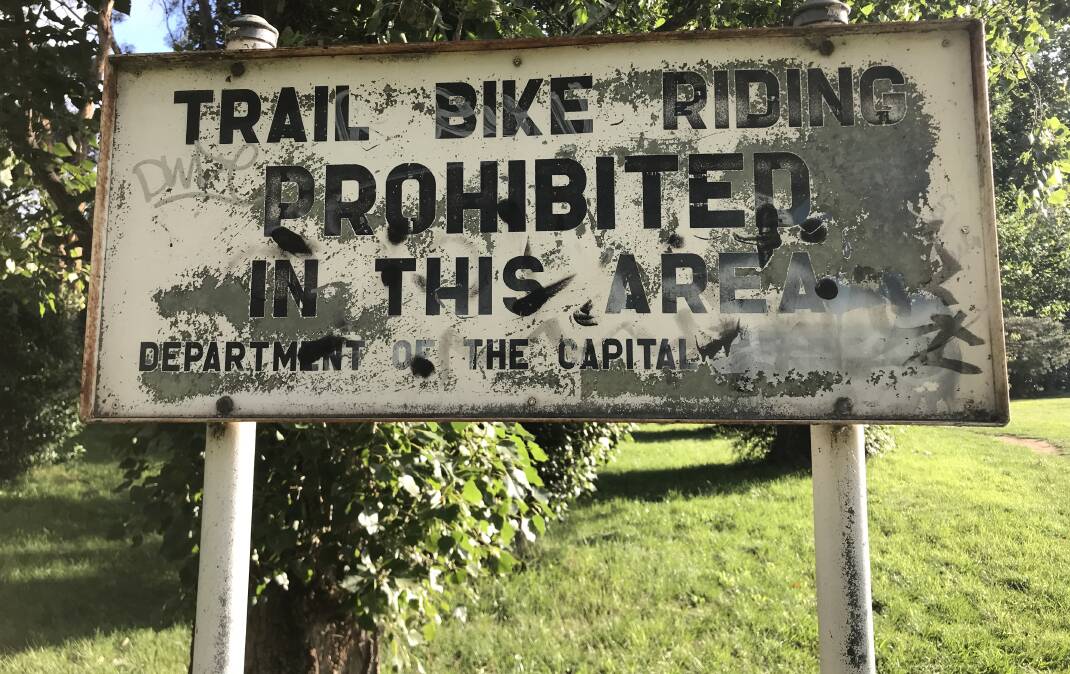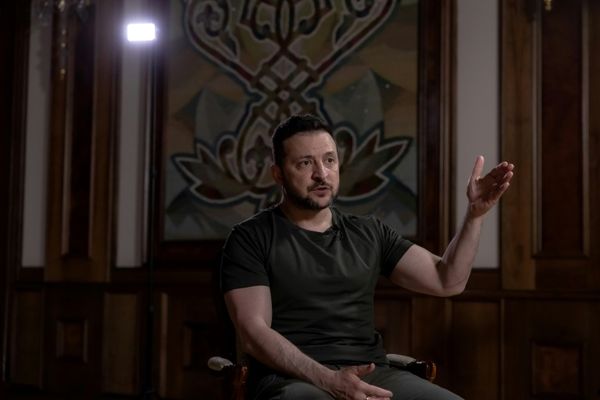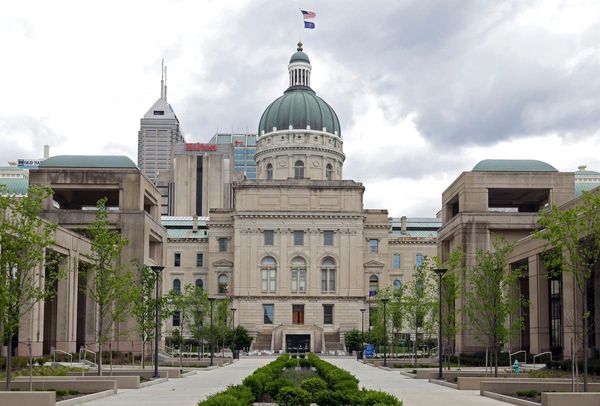Who remembers the Collector Pumpkin Festival? How could you not. It was one of the most successful country festivals in our region. And it isn't even a pumpkin growing area - a local progress committee just thought a celebration of the orange vegetable would be a great idea. And it was. Following the inaugural festival in 2003, each year the much-loved event went from strength to strength, raising much-needed funds for local community projects.
While COVID and other challenges scuttled the annual festival, with the last one held in May 2019, its absence has provided an opening for other festivals to thrive. One of those is the Tallong (30 minutes' drive east of Goulburn) Apple Festival on this Sunday May 5, and another is the little-known Hoskinstown Chestnut Roast on Mother's Day (Sunday May 12) from 10am to 2pm.
For the uninitiated, Hoskinstown, located to the south-east of Queanbeyan, is 20 kilometres closer to Canberra than Collector. Perched alongside the busy Federal Highway, the pumpkin bash was easily promoted to the parade of passing motorists. However, luring visitors to sleepy Hoskinstown is not so easy. But it's definitely worth the drive. And guess what? They even grow chestnuts in Hoskinstown.

Earlier this week I caught up with Rowan Simpkin at the village's hub, the almost century-old War Memorial Hall whose maintenance will benefit from the profits of the festival.
"We aren't very big but we're very friendly," says Rowan. "There will be lots of stallholders, live music and of course loads of chestnut-flavoured treats, including many soups." The Bungendore butcher is even making pork, sage, apple and chestnut sausages which will available fresh or cooked on the local fire brigade's sausage sizzle. Heck, there'll even be chestnut-flavoured gelato.

"While chestnut roasts are a big thing in Europe, we are the only chestnut festival of its kind in Australia," boasts Rowan who is hoping for a bumper crowd on Mother's Day.
If you go, after getting your chestnut fix, wander around the village. Here's my top 5 must-see attractions:

Curious corrugation: While the hall was built on land donated by the Hyles family in the late 1920s, it was clad in a smorgasbord of corrugated iron donated by other farming families, giving it a unique exterior. A photographer's delight.
Axed appendage: Next to the hall is the old school where stories abound that in the early 1900s, a boy was flogged for being late after falling from a horse. But that pales into insignificance when compared to the ordeal of poor Tom Daniel who accidentally chopped off his big toe with an axe. The Queanbeyan Age of April 18, 1878 splashed the story over its front page with all the gory detail: "...the implement struck an over-hanging branch which broke the force of the blow intended for a particular limb, and diverted the blade, so that it fell with full force upon the unfortunate young man's left foot, cutting through the boot and completely severing the great toe. He bore the accident with fortitude and, failing to obtain a buggy, rode the whole distance (over 20 miles) into Queanbeyan the same evening, faint with loss of blood and much exhausted. Dr Richardson dressed the wound, and we are glad to say the young man is now doing well". A 2015 edition of the local newsletter, The Hoskinstown Ewes, asserts: "These days someone would pick up the toe, put it on ice and run him into emergency in a 4WD. A clever surgeon might even reconnect it. They made 'em tough in 1872." They certainly did.

Toppling tombstone: In the overgrown graveyard of the 1866 St Peter's and St Paul's Catholic Church is a tombstone, the top of which is hanging on for grim life. With 39 known unmarked graves and possibly several unknown, the graveyard is pockmarked with hidden depressions, so watch your step.
On the southern side of the church, near a classic outdoor loo, is the church bell. Be sure to check out the stand - an upcycled length of railway track, possibly salvaged from the Captains Flat Branch line which runs just metres from the back of the church.

Or at least it did until it was closed in 1968 following the closure of the Captains Flat mine.
People Power: According to a walking tour of the village developed in 2004, the section of the Hoskinstown Road between Briars Sharrow and Plains Road was opened "by public action".

Apparently, a landowner prevented access along the shortcut to the town, but in October 1890, a group of locals - having fortified themselves with beverages from a Bungendore Hotel - marched down the road to the accompaniment of a band belting out See the Conquering Hero Comes. By the time the rowdy mob reached Hoskinstown there was a procession a mile long.
ET phone home: The site of dozens of well-oiled farmers marching through a paddock would be almost as impressive as the massive Molonglo Observatory Synthesis Telescope which now dominates the landscape just north of town along the Hoskinstown Road.

The two arms of this iconic scientific instrument, owned by School of Physics at the University of Sydney, are each a whopping 1.6 kilometres long.
Last year, the telescope - which gazed deeply into the cosmos for more than 50 years and was pivotal in much pioneering radio astronomy - was quietly decommissioned, and despite several approaches by this column, the boffins in charge remain strangely tight-lipped as to the future of the site. Who knows, maybe they discovered ET after all?
Willow tree myth
At the bridge that spans a small creek near the War Memorial Hall in Hoskinstown is a willow tree, which like many along the nearby Molonglo River, according to local folklore, hails from cuttings taken from Napoleon's grave on the island of St Helena.
In Rivers: The Lifeblood of Australia (NLA Publishing, 2020), landscape historian Ian Hoskins points the finger at Colonial treasurer William Balcombe, whose family took up land near present-day Hoskinstown in 1824-25. "It was Balcombe who probably provided the cuttings for the weeping willows which came to be planted along the Molonglo in an attempt to stabilise the banks," he says. "They were the offspring of trees that shaded the grave of Napoleon, whom Balcombe befriended on St Helena".

However, in his recent comprehensive history (Canberra: II Colonisation 1824-61, Sorely Boy, Melbourne 2023), historian James McDonald pours cold water on this theory.
"These stories are false," he states. "The problem is the family left the island before the emperor died ... If the Balcombes were responsible for sourcing the willow cuttings, they must have engaged others to collect them on their behalf and, if so, at a much later date."
McDonald also dismisses a theory first published by pioneering newspaperman John Gale that Edwin Bambridge planted willows sourced from Napoleon's grave along the Molonglo in 1845. "This story is also debunked on the basis of timing, irregularities and opportunity," he writes.
According to McDonald, "a superior candidate for sourcing the cuttings" was Alfred Mainwaring Rich, who arrived in the colony in 1845 and who was schoolmaster at Taralga, Gundaroo and Ginninderra and whose family owned the very land on which Napoleon was briefly interred from the 1820s.
However, we may never know for sure, for Rich never claimed to be responsible.
WHERE IN THE REGION?

Rating: Medium
Clue: Riverside rest area less than 100km drive from Civic
How to enter: Email your guess along with your name and address to tym@iinet.net.au. The first correct email sent after 10am, Saturday May 4 wins a double pass to Dendy, the Home of Quality Cinema.

Last week: Congratulations to Rosemary Semecky of Sutton who was the first reader to correctly identify last week's photo as a sign behind Jansz Crescent in Griffith, near the Flinders Oval. John from Torrens who submitted the photograph reports: "I took the photo mainly for its reference to the 'Department of the Capital Territory' [which existed from December 1972 to March 1983] and trail bikes." Did people burn around a park in Red Hill on trail bikes enough to warrant a sign back then?" he asks.
Rosemary also knows why. "That sign was erected because my brother and some friends would ride their motorbikes down there to the annoyance of local residents," she reveals. "My parents lived on Jansz Crescent from 1960 until 1999 ... My brother now lives nearby and can see Jansz Crescent from his patio - what wonderful memories!"
According to readers, there are several of these dated signs still standing elsewhere around Canberra. Peter Harrington of Red Hill reports: "There's one in Lyons off a dirt track between Devonport Street and Bavin Street", while Ray Lindsay reports another "near the end of Maurice Place in the Hughes Garran Woodland". Meanwhile, Sarah Hnatiuk explains there's one on Mt Painter. "It was the subject of a brief mention in Friends of Mt Painter's October-November 2023 newsletter where the question was asked "should it be kept as a record of former times or removed as a deteriorating, rusting eyesore?"
It's all in a name

Although the settlement was first known as Blackheath, due to confusion with the Blue Mountains village of the same name, in 1870 the name was changed to Hoskin's Town. For the following 100 years the village was spelt in numerous other ways including Hoskingtown, Hoskin Town, Hoskingstown and Hoskinton. Despite the name Hoskinstown being confirmed in 1969, many still used Hoskingstown and in 2002 The Geographical Names Board of NSW officially gazetted the village's name as Hoskinstown.
Did You Know? The infamous 1970 Ned Kelly film starring Mick Jagger was partially filmed in Hoskinstown and surrounds. Also, the 2024 TV mini-series The Narrow Road to the Deep North, based on Richard Flanagan's book of the same name, filmed some scenes in Hoskinstown.
- CONTACT TIM: Email: tym@iinet.net.au or Twitter: @TimYowie or write c/- The Canberra Times, GPO Box 606, Civic, ACT, 2601







